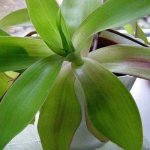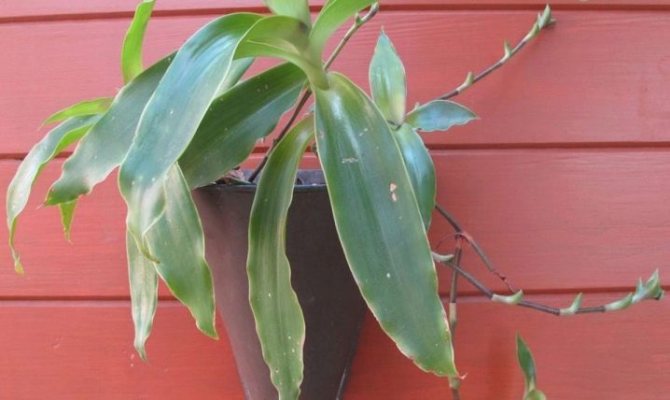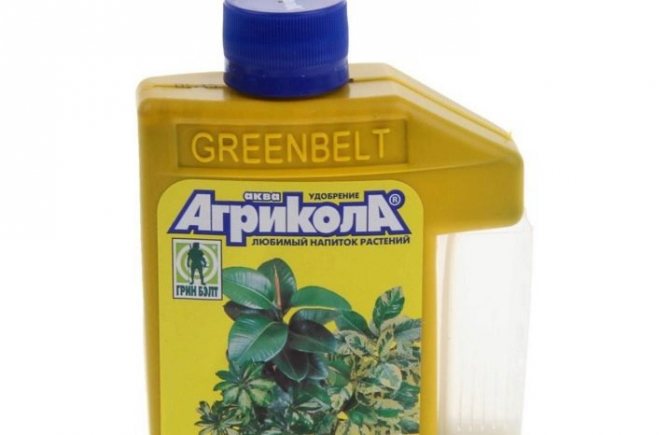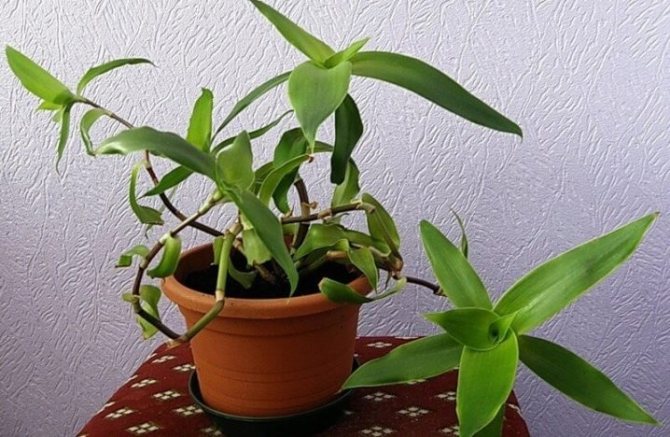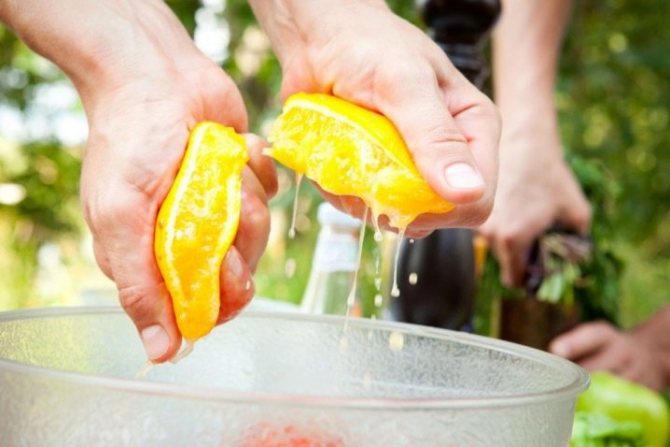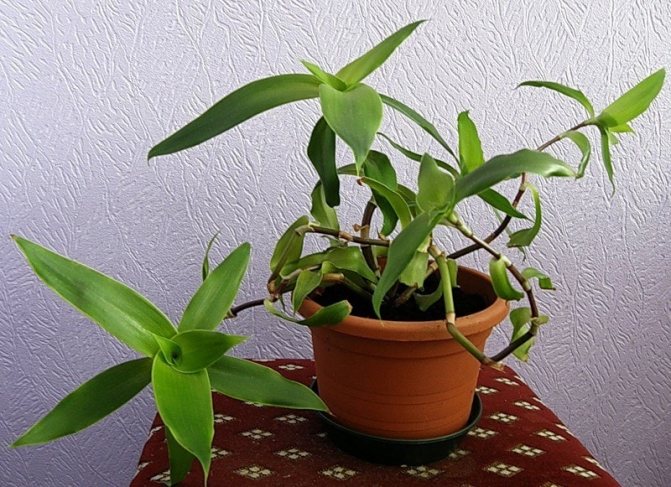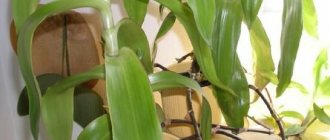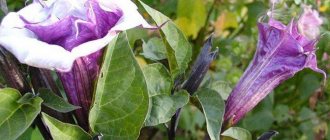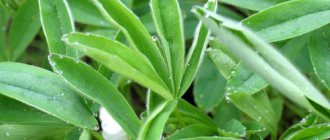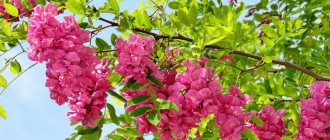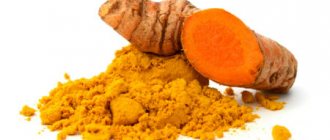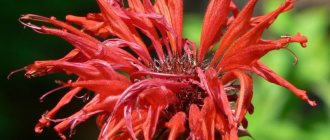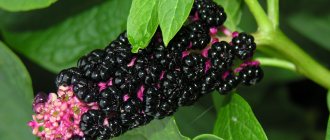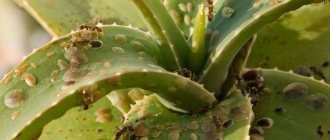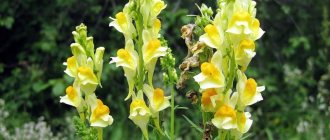Almost every person has a small greenhouse on the windowsill. For many, growing indoor flowers is a hobby. However, some use this opportunity to grow medicinal plants with their own hands. One of them is the golden mustache, which perfectly restores many systems in the body, which significantly improves health. This article will talk in detail about such an indoor plant as a golden mustache, photos will clearly show how it looks. Particular attention will be paid to the rules for care, as well as the beneficial properties of the plant.
Related articles:
Tips for planting and caring for a golden whisker The healing properties and contraindications of the golden mustache We use the juice of the golden mustache for treatment Healing properties of golden mustache tincture How to prepare and take horse chestnut tincture
What does a golden mustache houseplant look like: photo and description
The indoor plant golden mustache belongs to the commeline family, the genus Callisium. There are 12 species in the genus that grow in the tropics of Central and South America and Mexico. In culture, only one species is best known, which is called the golden mustache.
What does a golden mustache look like in the wild? This creeping grass up to 2 m long "crawls" along the mountain slopes and clearings, rooting in the nodes. It has been cultivated in indoor floriculture for over 100 years. In the 21st century, they began to be planted in winter gardens in combination with other ornamental or medicinal plants such as palm, tea rose, lemongrass, aloe, Kalanchoe, etc.
According to the description, the indoor golden mustache is not much different from the wild one. This culture got its name from the presence of long shoots that extend from the axils of the leaves, like the "whiskers" of strawberries and also take root. The length of these "whiskers" is up to 1 meter, they are naked, reddish-brown with long internodes and small rosettes of leaves at the ends (it is usually believed that only shoots no shorter than 9 internodes are suitable for treatment). Large, up to 30 cm, almost linear alternate leaves, covering the stem, develop only after rooting. When a sheet breaks, thin threads of rubber stretch between its parts. The stem of this plant, although long, is not able to stand upright, so it needs support in the apartment.
With good care at home, a golden mustache sometimes blooms. Small flowers - less than 1 centimeter in diameter - are collected in paniculate inflorescences. Flowers emerge from the axils of the leaves and are collected in paired, hanging clusters on small peduncles.
As you can see in the photo, in a houseplant with a golden mustache, each flower has three white, pink or blue petals:
Despite the fact that the inflorescences themselves are inconspicuous, they attract attention with a strong pleasant smell, similar to the smell of hyacinth.
Short description
The natural habitat of the golden mustache is the tropical and subtropical regions of America, the Antilles. The genus Callisia includes 20 species. In indoor floriculture, three types of callisia are widespread:
Fragrant callis is popularly known as a golden mustache. Other popular names: homemade ginseng, spider, hair venus, corn, mustache, Far Eastern mustache.
Outwardly, the plant is not very attractive - a green erect stem and long naked shoots extending in all directions.For the golden mustache, two types of shoots are characteristic - creeping and erect.
Fleshy erect shoots grow to a height of 70-150 cm. Large leaves resemble the leaves of young corn.
From the lower part of the vertical stem, creeping shoots with rosettes of leaves at the ends depart in different directions - whiskers, similar to strawberry ones. They consist of "joints".
Having torn the leaf of callisia, one can see how thin golden threads stretch between the two halves - the vessels of the leaf tissue.
Under suitable conditions, the plant blooms with small white or pink flowers with a delicate pleasant aroma.
Growing a Golden Mustache at home to obtain medicinal raw materials
Golden mustache, scientifically called Callisia fragrant, a flower from the Kommelin family, is grown at home to obtain medicinal raw materials. The leaves are similar to those of corn, the same elongated and pointed at the end, bright green in color. Whiskers, long, fleshy shoots, consisting of short internodes, diverge from the main trunk in different directions.
This is what the Golden Mustache is. Not to be confused with Dichorizandra. She is in the photo on the right.
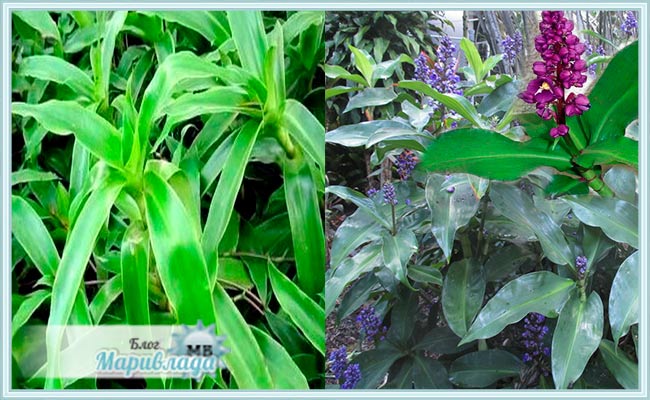
As it grows, lateral processes may branch off from the main stem. At the end of the shoot, which can reach 100 cm or more, there is a rosette of leaves. When this rosette takes root, a new plant is formed. With good care, Callisia blooms after a year. Fragrant inflorescences of small white flowers appear from each joint. It turns out a kind of garland of snowballs on a green branch.
Traditional healers consider Homemade ginseng to be a cure for many diseases. What kind of potions are prepared from this green wizard! Syrups, tinctures, ointments, balms, decoctions, infusions, rubbing, are prepared by herbalists. Scientific medicine began to study this plant only at the end of the 20th century. Researches of pharmacologists have found in the composition of Callisia substances with medicinal properties.
Since then, formulations have been made from it, which are sold in pharmacies. Most often these are tinctures and creams. They help with joint pain, in gynecology and cosmetology.
Their properties are manifested in stimulating immunity and restoring the body by its own means. The juice itself has no effect on pathogenic microorganisms. Useful properties are manifested only through the stimulation of the immune system of the human body. Cats especially love to be treated with the juice of this plant, and they try to bite off a piece. And these tailed beasts are difficult to deceive.
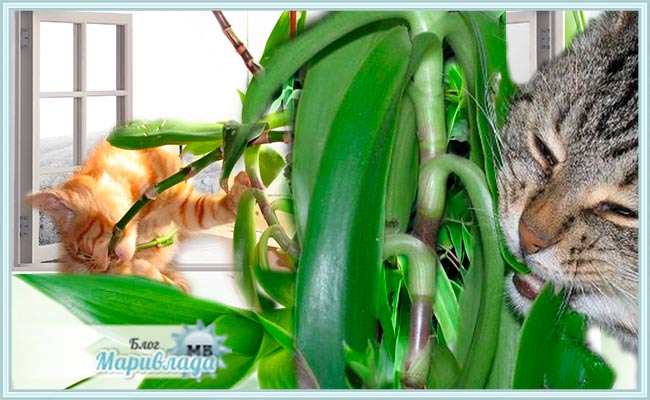

Botanical description
Golden mustache, or fragrant callisia, - a slow-growing perennial, reaching about 1 m in height and 60-120 cm in width, with leaves 15-25 cm, arranged in turn. During growth, bulges form on the trunk, gradually transforming into separate shoots - "whiskers". At the same time, they include several "joints", at the end of which leaf rosettes are located. Such shoots belong to the first type and are used for reproduction as soon as the "whiskers" acquire a lilac color.
The second type is formed by straight, fleshy leaves, similar to corn leaves. Their bases are close to each other, which is why there is often a misconception that this is one outlet. If you break the leaf, you can see thin stretching hairs, which became the reason for the appearance of such popular names for this plant as "hair Venus" or "living hair".


How to grow a golden mustache and how to care for it
Growing a golden mustache at home won't be a hassle. It is necessary to create all the optimal conditions under which the plant will be comfortable. A ceramic pot with a diameter of at least thirty centimeters or a wide ceramic vase is suitable for planting.
They are grown not only in pots, but also in a greenhouse, in the country, and even under a film.To do this, you need to use lateral horizontal shoots, which are rooted on the stem in the soil. The main stem must be tied to a support, and the shoots from it are bent to the soil and ground is poured on them. As soon as the shoots take root, they are cut off for transplantation to another location.
Heated greenhouses are equipped with “climate control” or simple air conditioning systems in combination with special fountains to humidify the air in the summer heat. In addition, it is recommended to spray the entire plant with clean water - thawed from the refrigerator or freezer, but not tap water, containing chlorine, phenol and other harmful chemicals.
Proper care of a golden mustache at home provides for daily watering in the spring and summer, but without waterlogging the soil, and less often in autumn and winter - two or three times a week. The soil in the pot must be moistened to the ground. To prevent the jet from eroding the soil, it is better to use a watering can with a fine strainer or a teapot. An hour after watering, the water must be drained from the pallet, and the pallet and the bottom of the pot must be wiped dry so that mold does not appear.
Reproduction methods
You can get a new culture in several ways:
- layering from the mother plant;
- cuttings;
- sockets;
- seeds.
The latter option requires the culture to flourish.
Seeds are collected from the faded buds of the plant, but since fragrant callis does not always bloom at home, flower growers use this method extremely rarely.


In greenhouse conditions, the golden mustache can be propagated by rooting long shoots of the culture. After 2-3 weeks, young roots should form on the selected stems, after which this part of the culture can be separated and planted separately.
If the golden mustache is propagated by cuttings, then the planting material is obtained from a healthy shoot by dividing it into several parts, each of which must contain several internodes.
You can plant cuttings in a pot, having previously prepared a substrate of peat and sand for them. A young culture germinates at room temperature under a film. The soil is moistened as it dries up. The mini-greenhouse should be ventilated daily, temporarily removing the covering material in order to remove condensation accumulated on the film and the walls of the pot. As practice shows, after 2-3 weeks the cutting will take root well in the ground.


To grow new fragrant callis from the sockets, it is necessary to select a part of the culture containing it with a small tendril. Having separated the outlet, the plant germinates in any container with water. It is necessary to take care of the golden mustache as follows - regularly change the water to a new room temperature, since stagnant liquid can cause rotting of the stem and roots.
After the appearance of healthy roots, the fragrant callis can be transplanted into a small pot.
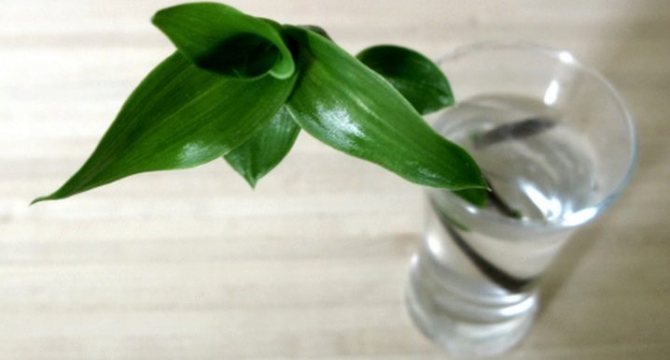

Growing and caring for a golden mustache at home
The need for watering is determined simply: if the knock on the edge of the pot is loud, then the earth is dry, if it is deaf, then the earth is wet, and the top layer of the soil, when it dries up, turns gray. Likes frequent bathing and spraying with a spray bottle. You can spray the plant in the morning and in the evening, provided that the apartment has dry warm air. Between waterings, the soil under the flower must be carefully loosened. The ideal temperature for flower growth is considered to be 25 - 27 ° C, with a recommended humidity of 50 - 60%. In winter, the temperature can be lowered slightly.
Here are a few more tips on how to grow a golden mustache at home to get a great herb for medicinal tinctures.
Fertilization or top dressing is necessary. You can feed the plant with liquid fertilizers after the development of its root system. In the warm season, fertilizers are applied once a week, in the cold season - once a month.For feeding this home plant, it is best to buy ready-made mixtures.
In the process of caring for a golden mustache at home, do not forget that the plant loves light, but cannot stand direct sunlight, especially hot evening ones. In this case, the plant becomes discolored and curled, whiskers cease to form. After being transferred to the shade, it quickly recovers. Winter temperature should be between 16-18 degrees, otherwise the plants stretch strongly, reducing the amount of active ingredients. In summer, you can take it outside in a shady place.
Possible growing difficulties
Basically, it's easy to grow a golden mustache at home, but there are still points that you need to pay attention to:
- the lack of minerals in the soil, water, or an excess of sun may be indicated by the appearance of brown spots on the leaves or dry tips;
- an excessive amount of water or too low a temperature will be reported by rotting lower leaves;
- if the plant becomes dull or yellow spots appear, this signals an inadequate feeding.
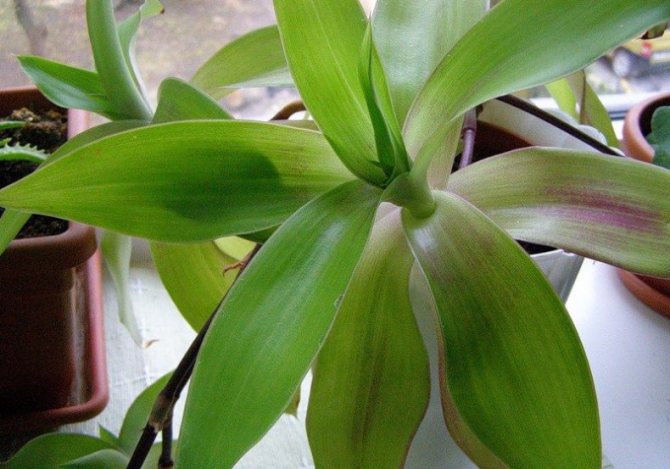

Callisia is often a plant that is practically not exposed to pests, but many are interested in how to still care for a golden mustache if a red spider mite appears. The most important thing is to ensure regular airing of the room and spraying of the leaves. If this does not help, you should spray it with an insecticide and cover it with a bag for a couple of days, or use a solution of laundry soap and tobacco, which forms a protective shell on the leaves.
Home care
Since the fragrant callis is a ground cover crop, it is recommended to plant it indoors in a hanging basket or pot. Crop care, as a rule, does not require the creation of special conditions, therefore even a novice florist can cultivate a golden mustache on his own. There are a number of key points to consider when creating a suitable microclimate for your plant at home.
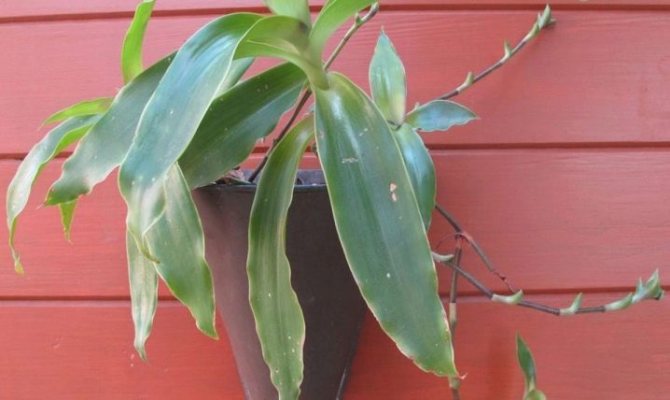

Lighting
For fragrant callis, it is necessary to choose a place with year-round access to diffused sunlight. The best place to place the pot will be window sills on the east or west side. Determine the lack of light based on the color of the leaves. - with sufficient illumination, the green mass will be saturated and bright in color. Avoid direct sunlight on an indoor flower so as not to provoke a burn.


Air temperature
Based on the season, the room temperature can be adjusted. In spring and summer for the culture, the optimal thermometer values will be from + 20 ° C to + 27 ° C. With the arrival of winter, the temperature should be lowered to the mark + 15.20 ° C.
The critical point at which the plant can die will be + 12 ° C.
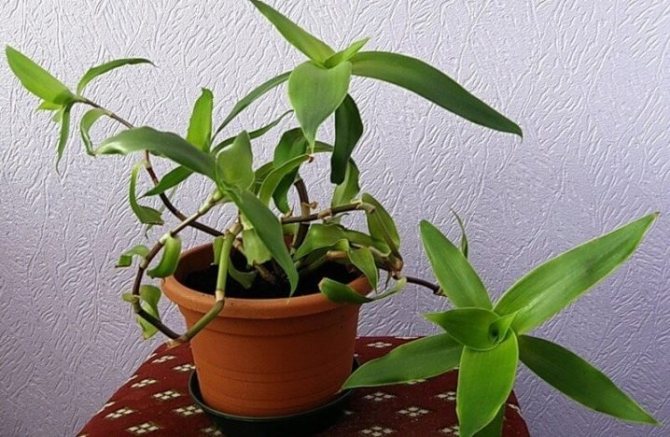

Watering and moisture
In the hot summer months, it is necessary to moisturize the golden mustache abundantly using settled water. It is possible to determine that the culture needs watering by the dried top layer in the soil. Lack of moisture can adversely affect the health of fragrant callusia. Due to the fact that the homeland of the plant is regions with a high level of air humidity, indoors, the flower should also be created close to natural conditions.
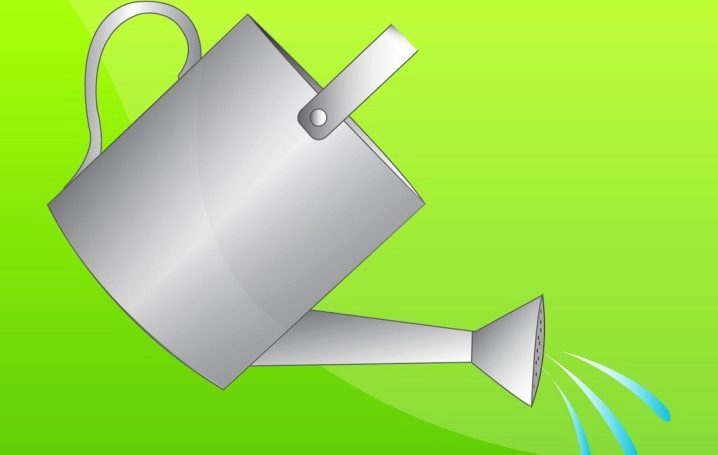

To raise the humidity in the heating season and in the summer heat, it is recommended to spray the leaves of the crop regularly.
Another option for moisturizing the flower is to place the pot in a pallet of damp pebbles. There is a scheme that can be used by adjusting watering:
- from spring to the arrival of autumn, you need to moisten the culture every other day;
- with the arrival of winter, watering is reduced to 1 time per week.
Experienced florists advise acidify the water before watering the golden mustache. To do this, add a few granules of edible citric acid to the settled liquid or squeeze some fresh citrus juice into it.
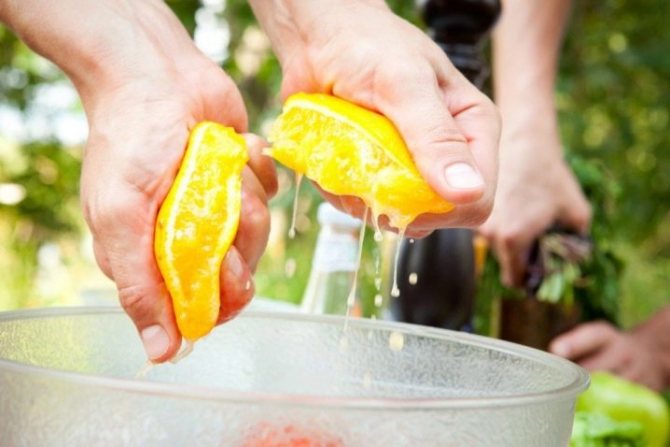

Top dressing
Fertilize the flower often.Fragrant callis is fed from spring to September. For this, it is recommended to use complex formulations. The need for constant feeding is due to the rapid depletion of the soil in the container with a flower, as a result of which the culture will develop much more slowly.
You can also fertilize a golden mustache with organic matter, but in a room it will not be entirely acceptable. It is important to feed the culture with store-bought formulations containing phosphorus, potassium and nitrogen, which will have a positive effect on the growth and visual attractiveness of the plant.
Diseases and pests
A useful plant is very often attacked by insect pests. Due to its small size, it can be difficult to spot "intruders" right away. However, culture signals with its appearance that dangerous insects have appeared on it. As a rule, the edges of the leaves turn yellow in the culture, they can fall off or lose their visual appeal. Among the most common pests, several individuals should be distinguished.
Thrips
Insects settle on the inside of the leaves of the plant, forming whole colonies there. The fight against the pest is carried out by regular preventive examination of the plant, as well as by treatment with systemic drugs for parasites. Among them are "Aktellik" or "Aktaru".
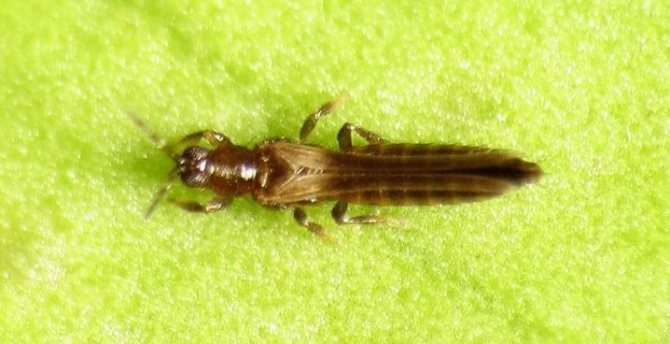

Spider mite
Most often, a red tick can be found on a golden mustache, which can be seen due to its color on the plant. To combat the pest, you must use store-bought insecticides for spraying a flower.
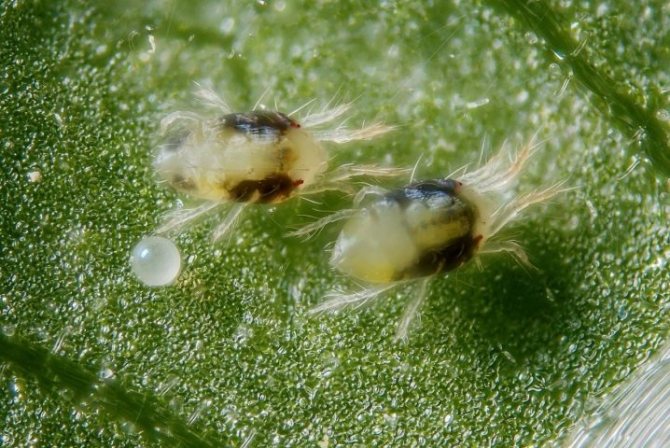

The medicinal plant can also suffer from various ailments. These include some dangerous diseases.
Chlorosis
Signs of the development of the disease will be pale or yellow leaves, which will suffer from chlorophyll deficiency. A lack of some important elements in the soil, for example, iron, or a lack of light can provoke such a condition. For the treatment of culture, flower growers use a solution of ferrous sulfate mixed with water for watering a flower.
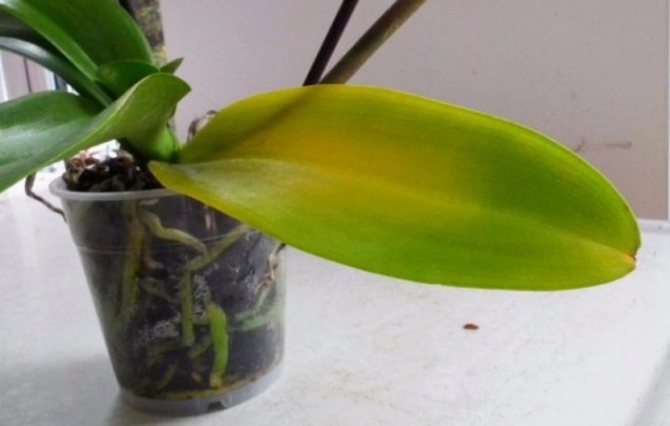

It is recommended to perform such manipulations for at least one month.
Powdery mildew
Fungal disease, the signs of which are the cobweb on the plant, which eventually becomes brown. Spots of a similar color also appear on the leaves. Too dry air or drafts at the place where the indoor flower is located promotes the spread of infection. It will be possible to cure the culture by treatment with a sulfur-based solution, as well as spraying with a copper-soap solution every 7-10 days.
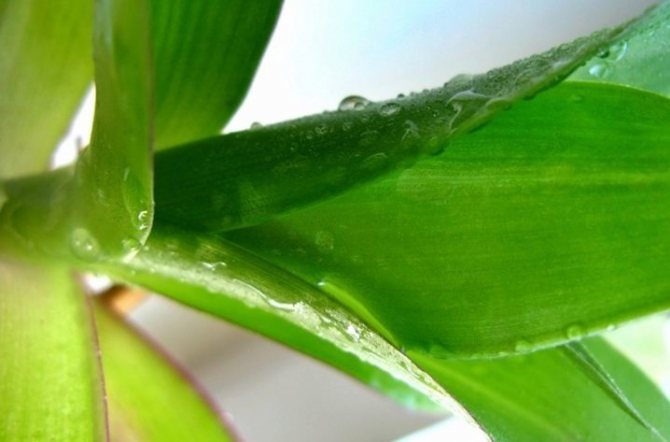

Rust
A common condition for golden mustache. It manifests itself as rusty spots on the green mass of the culture. For treatment, it is recommended to use pollination of the plant with ground sulfur.


For what else you need to know about growing a golden mustache, see the video below.
The golden mustache has been known as a medicinal houseplant for about 100 years.
The scientific name - fragrant callisia (Latin Callīsia frāgrans) is derived from the Greek words "beautiful" and "lily". The plant belongs to the Kommelin family. Its closest relative is Tradescantia.
How to plant, transplant and propagate a golden mustache at home
How does a golden mustache multiply at home and how to transplant it correctly? The plant propagates by layering, pieces of "mustache" and ordinary cuttings. The most favorable time for breeding is March, April, but if necessary, you can reproduce all year round.
From the mother plant, you need to cut off the top of the shoot with 2 - 4 nodes of the joints, remove the lower leaves, shorten the upper ones by a third. Dry the cuttings for 2 - 3 hours, and then plant in pots with a richly moistened soil mixture. Moisten the cuttings and cover with a plastic rooting bag.
A rosette of leaves with a small piece of stem is cut off from a horizontal lateral shoot and placed in a vessel with water. A powerful root system develops within 10 to 15 days. Then the young plant is planted in a pot with an earthen mixture and watered abundantly.
Before planting a golden mustache at home, you need to drain the shell of eggs or sphagnum by adding river sand. An earthen mixture is prepared from 2 parts of sod land, 2 parts of greenhouse land, 3 parts of leafy soil and 3 parts of sand.
Young plants are transplanted annually, and adults once every two to three years. It is better to transplant in spring or autumn.
Before transplanting a golden mustache at home, the plant is preliminarily watered with a nutrient solution based on micronutrient fertilizers containing potassium, as well as nitrogen, phosphorus and trace elements. In a new pot, the soil is prepared in the previously described way: small dolomite crushed stone, expanded clay, or pumice stone in combination with rock sand and wood ash are placed on the bottom.
For the soil for transplanting, plants take sod land, without weeds, from under the trees - linden, aspen, willow. In specialized stores "Gardener", "Dachnik", "Sadovy Mir", "Florist", ready-made soil mix is currently being sold for the cultivation of indoor plants of any kind.
Diseases and pests - thrips and red spider mites. At the first signs of damage, the plant must be sprayed with a systemic insecticide and covered for 1 - 2 days with a plastic bag. The best preventive measures are daily spraying and maintaining the necessary air humidity.
Planting and breeding
At home, the plant is grown in two ways: by seed and by dividing the bush.
Seeds
Seed propagation is a very tedious and unreliable process. Only a few can achieve the desired result. The harvested seeds are wrapped in cloth or paper and stored in a dry place. Planting is done in spring.
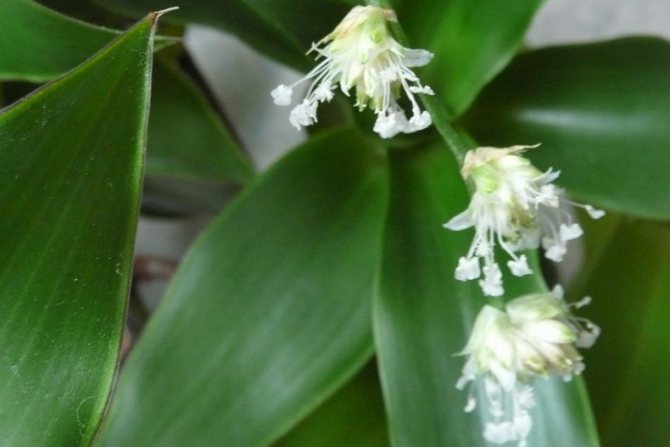

By dividing the bush
Such reproduction is carried out using sprouts, cuttings or rosettes of leaves.
1st method. Be sure to remove the leaves from the bottom of the scion. First, the sprout is immersed in water for 10-15 days until the roots appear. Then they are planted in the ground, but a little deeper than the rest of the flowers (approximately 2 cm from the first leaves). This encourages more roots to grow along the length of the stem, making the plant stronger. It takes root well and takes root quickly. This method is suitable for breeding all year round, but it is still better to do this from March to April - during the growing season.
2nd way. The top with two nodes is separated from the shoot, also removing the lower leaves, and shortening the remaining ones. The stalks are placed 3/4 in water. For the best effect, you can use the Epin growth stimulator. After the formation of roots (after 7-10 days), the golden whisker is planted in the ground.
3rd way. A rosette with leaves, which forms on one of the shoots, is cut off partially with the stem. Then it is placed in a container with a nutrient liquid, as in the case of propagation by a cuttings. After a couple of days, the water must be changed to clean and settled. And after 10 or 15 days, the plant is planted in a pot.
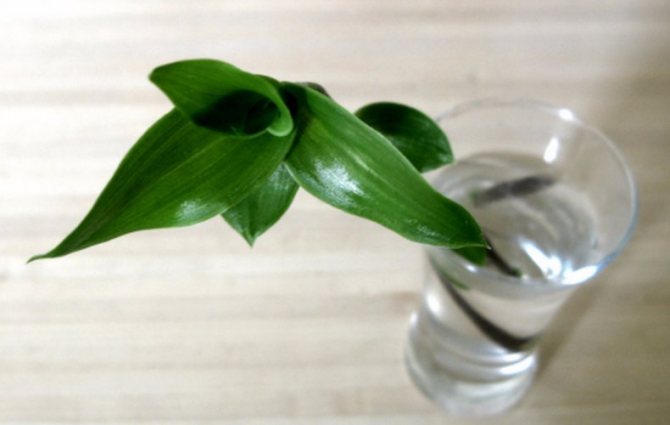

You can also immediately treat the cut of the cutting with "Kornevin", hold it in the fresh air for about two hours and plant it in a container with sufficiently moist soil. Spray the golden mustache with warm water, create a greenhouse effect by closing with a transparent lid or bag. After 3-4 days, the film is removed and generous watering and spraying is again provided. As soon as the young leaves appear, you can be sure that the flower has taken root.
Plant soil
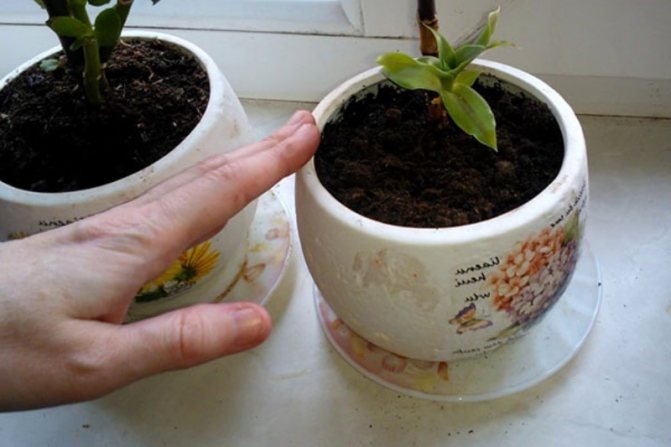

To plant callisia, it is necessary to mix several types of soil:
- greenhouse humus;
- sod land;
- river sand, preferably coarse.
At the bottom of the planting pot, it is advisable to make drainage. For drainage, you can use eggshells, preferably from raw eggs. To improve the effect, crush the shell with sand.
Landing rules
It is recommended to root the culture in loamy soil. with slightly acidic pH. The substrate can be purchased at the store; for the golden mustache, the use of universal soil is allowed. Some growers prefer to prepare the soil for an indoor flower on their own. For these purposes, river sand should be mixed with deciduous humus and high-moor peat. Sometimes garden soil and sand are used for planting plants.
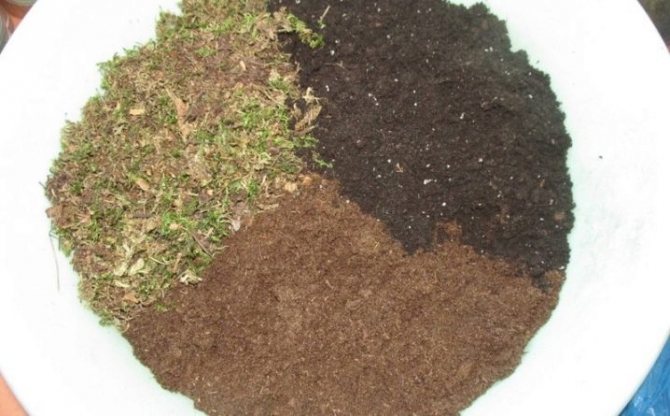

The main requirement for planting or transplanting fragrant callis is the lightness and nutritional value of the soil in the pot.
The first feature is important to prevent moisture stagnation, as well as rhizome decay. Rooting of the golden mustache is carried out in a container with the obligatory presence of drainage. For these purposes, you can use pieces of moss, eggshells or expanded clay. Sand before use is usually disinfected by calcination or treatment with a solution of potassium permanganate.
The healing properties of the indoor plant golden mustache
Back in the 19th century, American scientists began detailed studies of the plant. Many Spanish Catholic missionaries who visited the Maya and Aztec Indians wrote about the healing properties of the golden mustache indoor plant.
American scientists have found that the juice of this plant contains a large amount of biologically active substances. Russian scientists from the Irkutsk Medical Institute, Novosibirsk and St. Petersburg have established that in terms of the strength of the healing effect on the human body, the plant is not inferior to the famous ginseng, and in some parameters even surpasses it.
It is used in folk medicine for a variety of diseases: oncology, allergies, sore throat, stomatitis, varicose veins, radiculitis, pancreatitis, bronchial asthma, diabetes mellitus and many others. It is successfully used in the treatment of diseases of the eyes and joints, has anti-inflammatory, wound healing, antitumor properties.
The use of a golden mustache at home is effective in combating skin diseases, and is also actively used in cosmetology. It is used in the treatment of heel spurs, nail fungus, heart and lung diseases. In addition, the plant strengthens the immune system, blood vessels and perfectly heals the common cold and many internal diseases.
How to make medicines from a golden mustache at home: tinctures and ointments
It is not difficult to prepare medicines from a golden mustache at home: stems, leaves, lateral mustache shoots are suitable for this.
The simplest medicine is tincture. It is taken internally and used externally. Tinctures on water are prepared from leaves, and all parts of the plant are suitable for tinctures on alcohol or vodka.
The following describes how to prepare tincture and ointment from a golden mustache at home.
On vodka or alcohol. Pour half a liter of vodka or diluted alcohol into the escape from twelve rings. If the tincture of the golden mustache at home is intended only for rubbing, then alcohol can not be diluted, and in addition to the antennae, crushed leaves and a trunk can be added. Insist in a dark, dark place for two weeks, shake every day.
On the water. One large leaf - at least twenty centimeters, or several smaller leaves, brew in a thermos with a liter of water and leave for 24 hours. For the broth, do not brew, but boil for five minutes. Indications: for stomach ulcers, diabetes mellitus, intestinal inflammation, pancreatitis. Take one hundred milligrams half an hour before meals three times a day.
Oil tincture. Grind the leaves, stem and shoots in a blender, pour hot vegetable oil in a ratio of one (gruel) to two (butter). Insist in a dark, dark place for ten days.
Ointment. Grind leaves, stem and shoots in a blender. Mix with cream, petroleum jelly or animal fat.Better, of course, to use fat, since it does not contain foreign impurities.
Application
For medicinal purposes, use a golden whisker rosette from shoots with a length of 12 knots. Fresh callisia greens are crushed, squeezed and squeezed out of the juice. They do not store it, rub the skin with fresh juice in case of bruises, burns, joint pains. Apply compresses with juice for skin cancer.
Golden mustache juice mixed with baby cream or petroleum jelly (1 to 3) will help heal sciatica, arthritis, frostbite.
A decoction of callisia helps with diabetes, allergies, removes toxins and toxins from the body. To make the potion, the leaves (basic, not from sockets) of a golden mustache, 20 cm long, are boiled for 3 minutes (for 1 part of plant material, 3 parts of boiling water). The broth is poured into a thermos and left for 24 hours. You need to take the medicine in 1 tbsp. spoon three times a day, half an hour before meals.
After squeezing the juice from the leaves, the remaining raw materials do not need to be thrown away. The cake can be poured with any refined oil and placed in a dark, cool place for 3 weeks. The finished medicine is filtered, stored in the refrigerator. Used for skin diseases, headaches (smeared with whiskey).
Alcohol tincture of the golden mustache helps to improve the work of digestion, tones up. The shoot of callisia is crushed, placed tightly in a jar and poured with vodka. The medicine is prepared for 14 days in a dark and cool place. Take the tincture before meals, 0.5 - 1 tbsp. spoon.
Watch also the video
Fragrant Callisia (Latin Callisia fragrans) is a popular indoor plant. The people call the flower a golden mustache. Growing at home is not difficult, just follow some of the rules for caring for the plant. Many lovers of traditional medicine use it as a medicinal plant, although its medicinal properties are not recognized by official medicine.
Fragrant callusia for the treatment of joints
Currently, you can buy ready-made preparations from the golden mustache in pharmacies. But you can also prepare a healing elixir yourself at home - recipes for preparing potions exist in huge quantities. Let's consider one of them.
Water infusion


Homemade ginseng has a beneficial effect on sore joints. Water infusion of a flower helps to remove inflammatory processes in the body.
- For this purpose, take a large sheet 20 cm long, pour 0.5 liters of boiling water and simmer for 5 minutes on low heat.
- The mixture is wrapped in a towel, removed to a dark place for a day to infuse.
- The infusion is kept in the refrigerator and used for joints as lotions.

